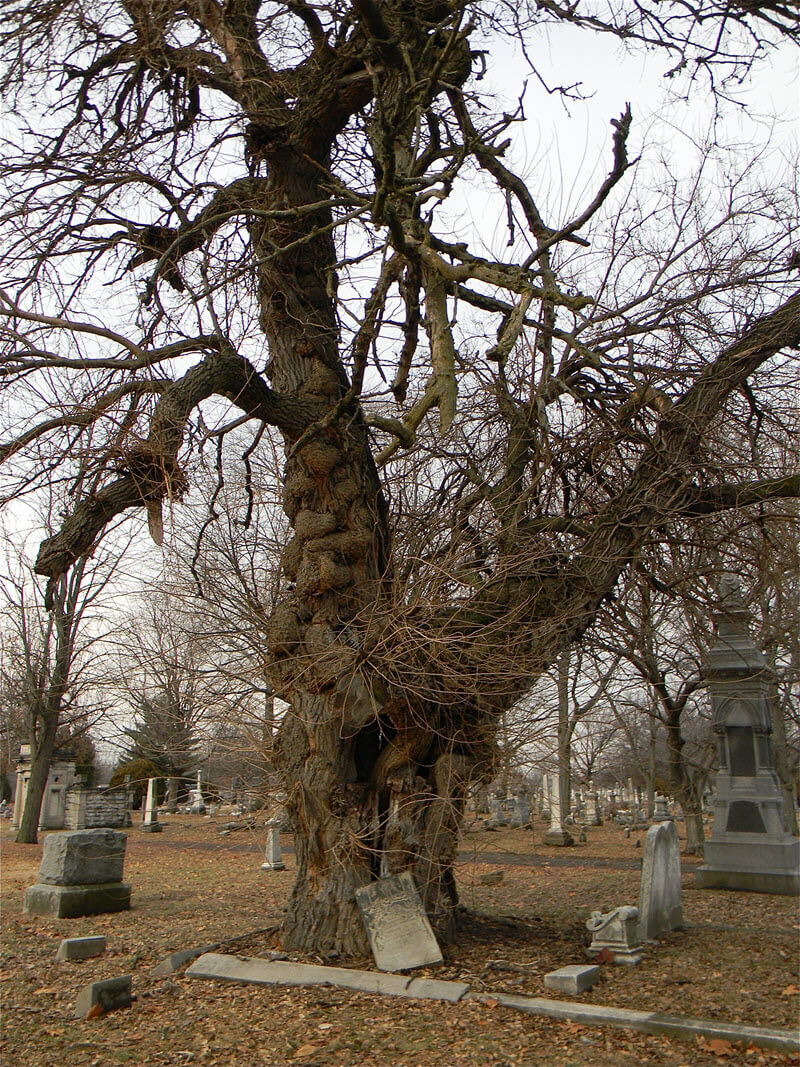Episode 228: The Free Genealogy Gems Podcast
Genealogy Gems Episode 228
In this episode:
- More new feature enhancements announced by Ancestry.com
- Listeners Trisha and Betty share their stories with Lisa in person
- Lisa’s interview with Crista Cowan, The Barefoot Genealogist at Ancestry.com
- The Tombstone Tourist, Joy Neighbors, share 3 intriguing discoveries that she’s made while searching cemeteries
- Military Minutes Man Michael Strauss explores an underused genealogical treasure: women’s registration cards on the home front from 1917-1918 during World War I
- RootsTech Film Festival semi-finalist Sydney Orton shares the touching story behind newly discovered precious audio and video tape, and how she and her sister honor their grandparent’s memories.
Please take our quick PODCAST SURVEY which will take less than 1 minute. Thank you!
IN THE NEWS: Ancestry.com Enhancements
Newest features announced on April 9, 2019 by Ancestry.com: Revamped User Profile Page and Improved Messaging system. Ancestry’s theory is that maximizing the features added to the Profile page will increase collaboration and responsiveness. According to Ancestry, if you’re using folders to organize your messages, you probably won’t be seeing the new version of the messaging system for another 6-8 weeks.
MAILBOX: Face to Face with Gems!
In this episode you’ll be hearing from the listener’s themselves. Trisha stopped by to visit with me at RootsTech 2019. Also, at the National Genealogical Society’s conference a few years ago Betty shared an exciting discovery she made by digging into one of my favorite free online resources: Google Books. (Premium Members: watch the Premium video Google Books: The Tool I Use Every Day and download the handout.)
INTERVIEW: Crista Cowan, The Barefoot Genealogist
Crista has worked at Ancestry since 2004 and is best known for her Barefoot Genealogist videos at Ancestry’s YouTube channel. In this episode she shares her own personal genealogy journey, and some of the new features announced by Ancestry.com at RootsTech 2019.
MyHeritage
MyHeritage.com is the place to make connections with relatives overseas, particularly with those who may still live in your ancestral homeland. Visit www.MyHeritage.com
GEM: Joy Neighbors, The Tombstone Tourist
If you’re a Genealogy Gems Premium Member you met author Joy Neighbors in Premium Podcast episode 169. Joy is a delightful national speaker, author, freelance writer, and avowed Tombstone Tourist.
Joy writes the weekly cemetery culture blog, A Grave Interest which you can read at http://agraveinterest.blogspot.com
Her book, The Family Tree Cemetery Field Guide, focuses on how to locate cemetery records, what to do when you get to the cemetery, and how to understand the silent language of the stones. She also shares a few stunning family secrets along the way. In the Premium podcast episode 169 Joy and I discussed cemetery research strategies that every genealogist can use to uncover family history.
In this Gem, I’ve invited Joy to share 3 very intriguing and surprising discoveries that she’s made while searching cemeteries which you can also read here.
Thanks for supporting this free podcast by using our links!
RootsMagic
Lisa Louise Cooke uses and recommends RootsMagic family history software. Visit RootsMagic and start creating your master genealogy database.
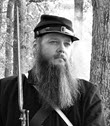
MILITARY MINUTES WITH MICHAEL STRAUSS: Women’s WWI Registration Cards
The Council of National Defense was created by an Act of Congress based on the Army Appropriation Act passed on August 29, 1916. This agency was made up of the Secretaries of War, Navy, Interior, Agriculture, Commerce, and Labor along with an advisory commission that was later appointed by President Woodrow Wilson on October 11, 1916. Their purpose was to come together and coordinate the industries and resources of the United States for national security and general welfare and to be prepared for war.
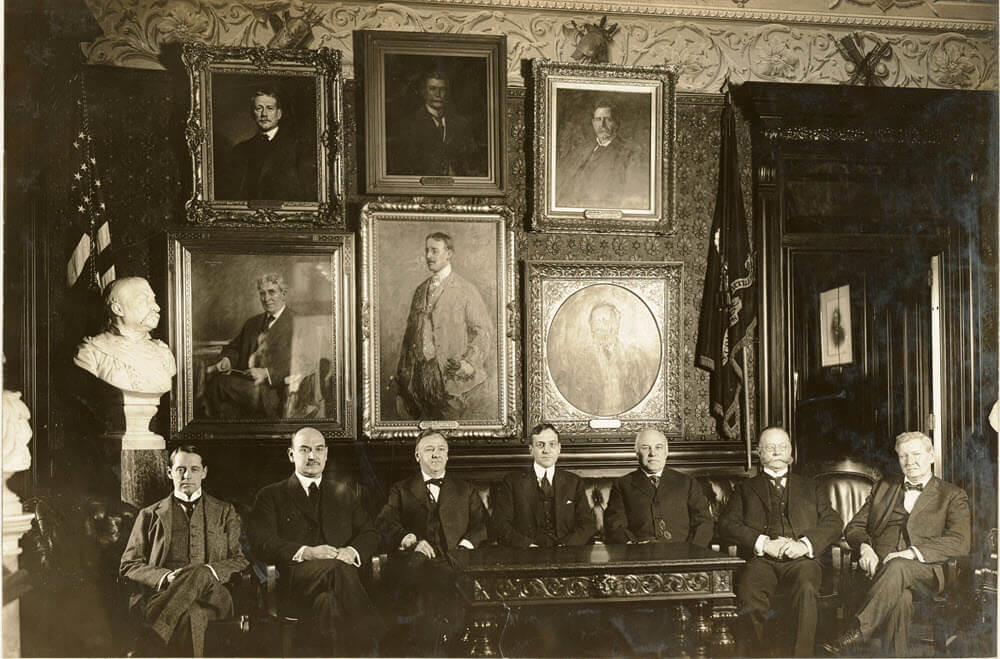
Later on, April 21, 1917 a few short weeks after the United States entered World War I the Women’s Committee of the Council for National Defense under the national council was created with suffragist Anna Howard Shaw appointed the Chairman. As the women organized separate divisions and chapters were created in every state and groups that centered on the African-American community.
When the division were formed registration, cards were filled out by women all across the United States requesting personal information. The cards not only offer genealogical details, but give a unique prospective into the social history of women in the early 20th century women move one step closer to national suffrage.
Details on the registration cards included:
- Name and address
- Age and marital status
- Color or race of applicant
- Country of birth and/or citizenship status
- Time applicant willing to pledge or volunteer for war effort
- Occupation and where and by whom employed
- Educational background
- Personal references for applicant
- Emergency service where volunteer willing to go and when
- Work experience or training to aid in the war effort
- Date and place of registration (wards or precincts in cities)
- Physical description
- General remarks
- Signed and dated registrar and assignment for war effort.
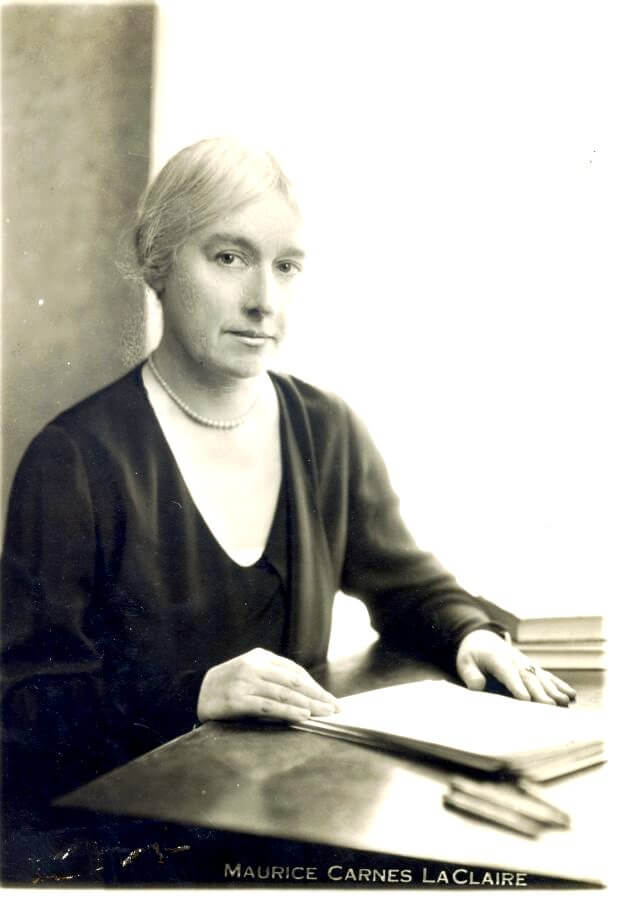
An example from one of the registration cards from Grand Rapids is for Constance M. Rourke (1885-1941), born in Cleveland, Ohio. She was an educator, a noted author, and historian. Educated at Vassar College in New York she later moved back to Michigan after a brief teaching career, where she worked for the Board of Education in Grand Rapids. She lived in the same house in town for the rest of her life after publishing several noteworthy books.
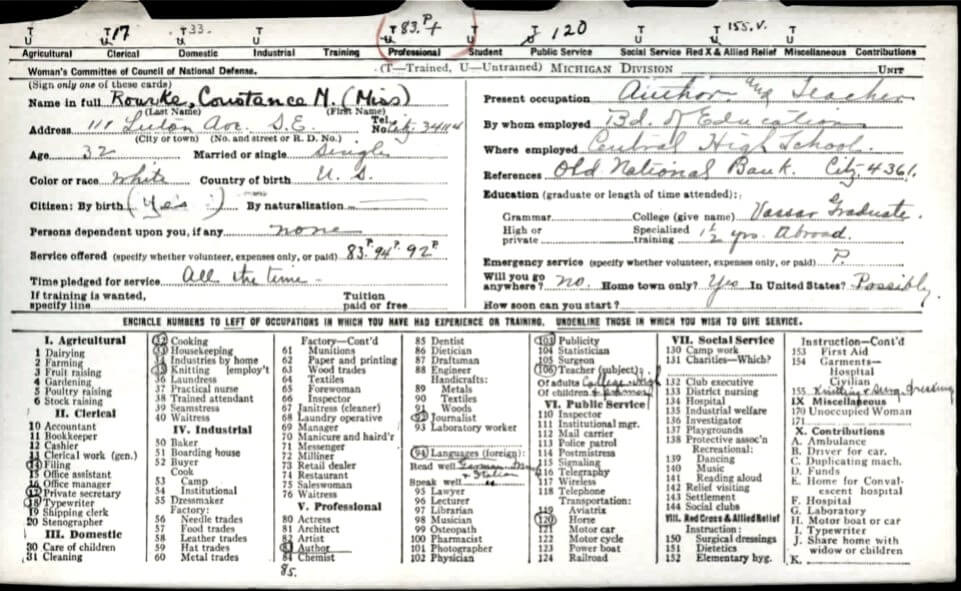
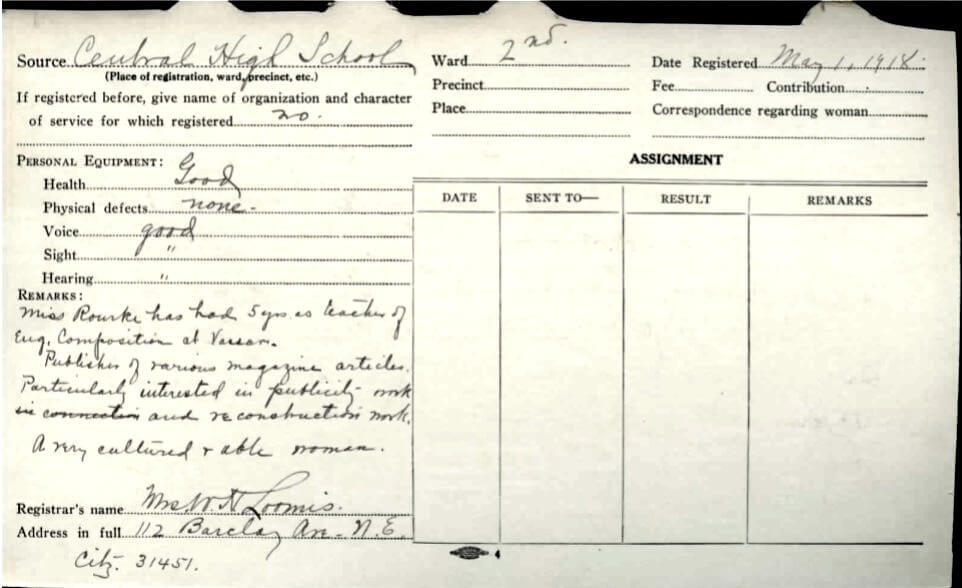
The national headquarters of the Women’s Committee of the Council of National Defense was located at 1814 N Street NW, Washington, DC. The building was formally the Playhouse Club and theater and owned by Washington socialite Henrietta M. Halliday (widow of Edward C. Halliday) who leased the property to the women’s committee for free during World War I. After the end of World War, I in 1918 the council continued to operate until it was dissolved in 1921.
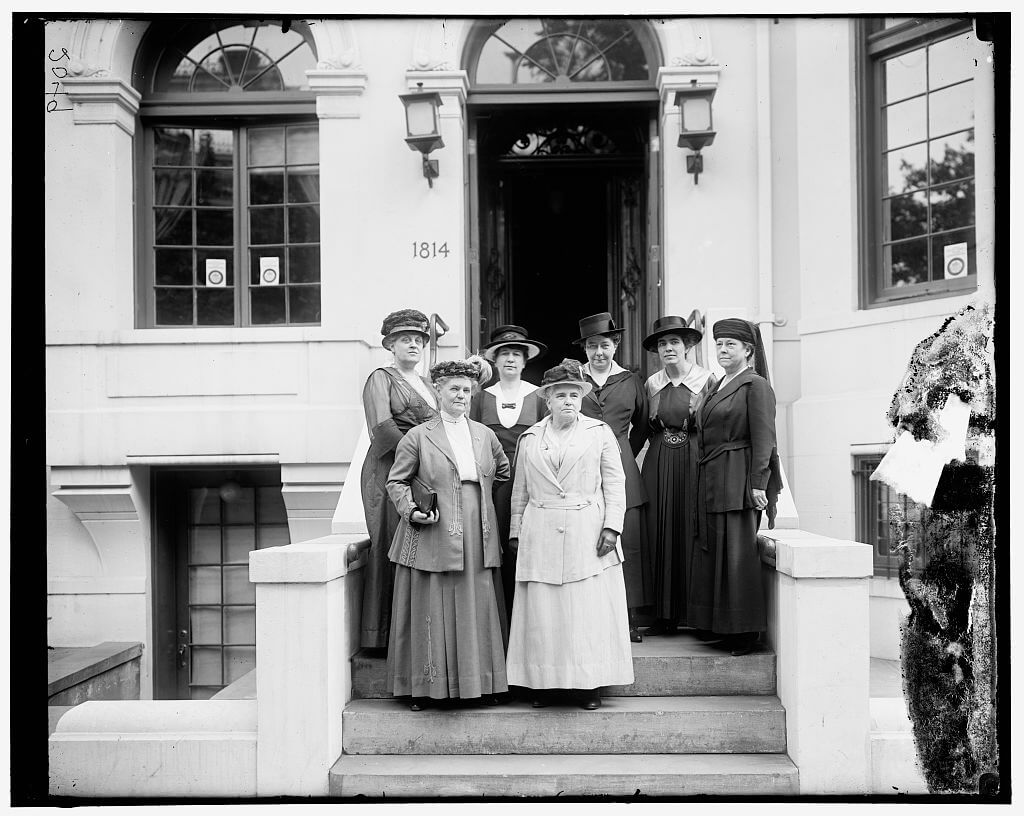
Several collections from different states are available online to research. One of the largest online databases comes from the Grand Rapid Public Library in Michigan. Their database search contains 22,836 individual registration cards that are searchable by name, address, age, and occupation. The records cover the Michigan Division of Grand Rapids for the Women’s Committee for Council of National Defense. The card indexes offer not only offer genealogical information, but provide educational background, work skills, and employment information. Online at https://cdm16055.contentdm.oclc.org/digital/collection/p16055coll5.
In Midland, Michigan another set of cards are available at the Midland Center for the Arts has in their collection registration cards that cover their county. This collection consists of 2 boxes that contain 802 total cards for area women residents. The cards are not digitized, but have been indexed by name along with an excellent finding aid on how to access these records: https://mcfta.pastperfectonline.com/archive/9CE77DF7-CBEA-47E8-80C7-383294794455
Another set of cards that is available comes through the courtesy of the Indiana Genealogical Society. Less than 50,000 registration cards are known to exist in the state of Indiana. Two counties (Jasper and Miami in Indiana), have known collections of registration cards, but believe other counties in Indiana have these treasures stored away in museums, courthouses, or in other libraries that are statewide and don’t know they exist. Anyone with more information on locations of more cards should contact them. An excellent blog post explains help they seek: http://indgensoc.blogspot.com/2018/05/wanted-ww1-womens-defense-cards.html.
Some smaller collections of online registration cards are located at the Arkansas State Archives in Little Rock. It is under Arkansas Women’s History Collection and has a finding aid online. At this time four cards are scanned to give patrons an idea of what to expect when searching this record group. On their website an excellent blog posting explains their records and as part of this group in Arkansas the Colored Auxiliary Council during World War I. Both can be searched online: https://arkansascouncilofdefense.com/home and to look at the limited number of cards: http://ahc.digital-ar.org/cdm/ref/collection/p16790coll14/id/72.
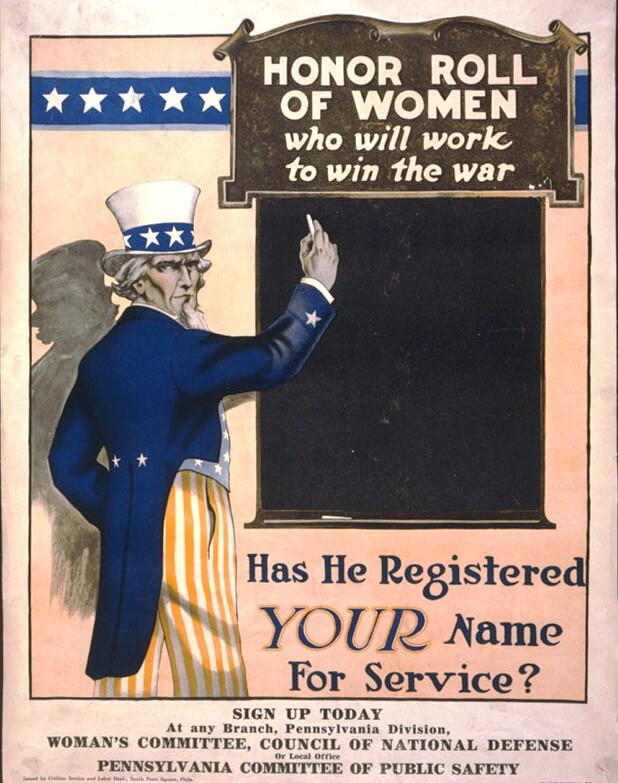
Another small collection online from the University of Iowa Libraries in Iowa City, IA. There digitized images are limited in number again to offer patron the opportunity to see what potential the records hold. They also have scanned some of the correspondence relating to the women who belonged to the local Iowa Division. To access their finding aids and look at the images: http://digital.lib.uiowa.edu/cdm/ref/collection/wwid/id/3300
From this list of online sources for the registration cards it appears that most are in the Midwestern part of the United States. It is true that several states have these available online. If the geographic area of the country of your interest isn’t listed than consider looking at different state archives, libraries, museums, and other historical sites. Searches in card catalogs, finding aid, and other sources will often be the best way to locate potential collections.
One final location that genealogists should consider comes directly from the National Archives in College Park, MD. This is known as Archives II. The records of the Records of the Council of National Defense (CND) which is located in Record Group 62. Besides the registration cards the Archives has general correspondence, weekly reports of state division activity, and minutes for meeting.
The minutes are digitized on the National Archives website and offer a glimpse into the activities of women nationwide. https://catalog.archives.gov/search?q=*:*&f.ancestorNaIds=391&sort=naIdSort%20asc&tabType=image
For more information and reading about the Women’s Committee for the Council of National Defense; some suggested sources:
Blair, Emily Newell. The Woman’s Committee United States Council of National Defense: An Interpretative Report. Washington: Government Printing Office, 1920. Online https://babel.hathitrust.org/cgi/pt?id=hvd.rslgqf;view=1up;seq=5
Breen, William J. Uncle Sam at Home :Civilian Mobilization, Wartime Federalism, and the Council of National Defense, 1917-1919. Westport: Greenwood Press, 1984.
Clarke, Ida Clyde. American Woman and the World War. New York: D. Appleton & Son, 1918. Online https://archive.org/details/americanwomenwor01clar/page/n7
Van Orsdal, Anita Anthony. “There shall be no woman slackers” The Women’s Committee of the Council of National Defense and Social Welfare Activism as Home Defense, 1917-1919. 2016. Michigan State University, PhD dissertation.
Backblaze Cloud Backup
Keep your family history research, photos, tree software files, videos and all other computer files safely backed up with Backblaze. Learn more at https://backblaze.com/lisa
GEM: Let Me Call You Sweetheart through the Generations
Sydney Orton fell in love with family history and started her research when she was 11 years old. Now at 19 years old, she is even more passionate about genealogy! I discovered Sydney one day on social media when I saw a short video she posted with her sister. Turns out she had entered the video in this year’s RootsTech Film Fest. While the video didn’t win, it won my heart because it featured an audio recording from long ago that her grandpa made for her Grandma. Because the audio from the film is so wonderful just on it’s own, I asked Sydney if I could share it with you here on the show, and she graciously agreed.
The Story Behind the Song
Sydney explains: “My Grandpa and my Grandma were in love when he left to serve a mission for the Church of Jesus Christ of Latter Days Saints in Australia. They were not yet engaged, but they planned to marry each other when he came back after two years. During the months he was gone, Grandpa sent Grandma gifts like a boomerang, a stuffed Koala bear toy, and photo prints.
For her birthday, Grandpa sent her audio tapes of him singing love songs, while he played the guitar. For my 14th birthday, Grandpa gave me his guitar. It was about 50 years old and I loved it.
Grandpa passed away suddenly in the fall of 2017. A few days after, my Dad was going through Grandpa’s computer and found the audio. Grandpa must’ve converted it a few years ago. It was such a special experience to listen to him sing.
A few months later, Grandma decided to move and she hosted a garage sale. My uncle Austin looked through the items and pulled out an unmarked, dinged up, video tape. He felt like he should take it home, so he did. He searched for a VCR player for hours before he found one. Then, he discovered what the tape contained. Footage of my Grandparents and their family! No one knew it existed. The video recorder belonged to my great grandparents, but they let their son and daughter-in-law borrow it occasionally. It was colorized, but silent, and it was beautiful.
Grandma and Grandpa had a special kind of love. The kind you see in classic 1930s Hollywood movies. The kind where you never doubt that they were meant for each other.
My uncle showed the rest of our family the footage during our last reunion. My aunts and uncles saw video of themselves as children for the first time! I saw my grandparents raise my Dad. It was such a gift.
For Christmas, I wanted to give my Grandma something special. So, I worked with my sister to put together a video compiling the audio from Grandpa’s mission and the silent footage my uncle found.
My sister learned to play the chords of “Let Me Call You Sweetheart” on Grandpa’s guitar because I couldn’t figure it out. She has a knack for just hearing music and playing it right. Together, we sang a duet with the recording from Grandpa. I mixed together the audio and edited the footage into one whole video.
The video was not completed in time for Christmas, but I did finish it in time to enter the RootsTech Film Fest where it made it to the semi-finalist round. The video was imperfect, but it was just right for its purpose. And that purpose was to make my Grandma smile. I was away at college when I wanted my Grandma to see it. So my Mom went over to Grandma’s house and facetimed me while they watched it. Grandma said to me after, “I was at dinner tonight and someone was playing the piano. I listened to the music and I tried to remember what it was like to dance with Steve.”
Together, we shared tears and laughter as we remembered my Grandpa, Steve Orton. I am forever grateful for the technology that made the video possible.”
Follow Sydney on Twitter: @genealogy_gal
Visit Sydney’s website: www.teenfamilyhistory.weebly.com
Get MORE Genealogy Gems with the Ad-Free Premium Podcast
1 Year Membership Featuring:
- Premium Podcast Audio Archive (150+ episodes)
- Now over 50 Premium videos!
- New content added monthly
- 12 months of access
- No auto-renewal (you decide!)
Attention Genealogy Gems Podcast App Users:
Don’t miss the Bonus Content in your app for this episode!
PRODUCTION CREDITS
Lisa Louise Cooke, Host and Producer
Bill Cooke, Audio Editor
Lacey Cooke, Service Manager
Disclosure: As an Amazon Associate, Genealogy Gems earns from qualifying purchases you make when clicking from the links we provide. It doesn’t cost you anything extra but it helps support our free blog and podcast. Thank you!


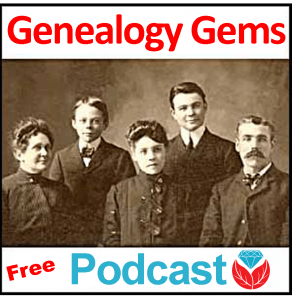

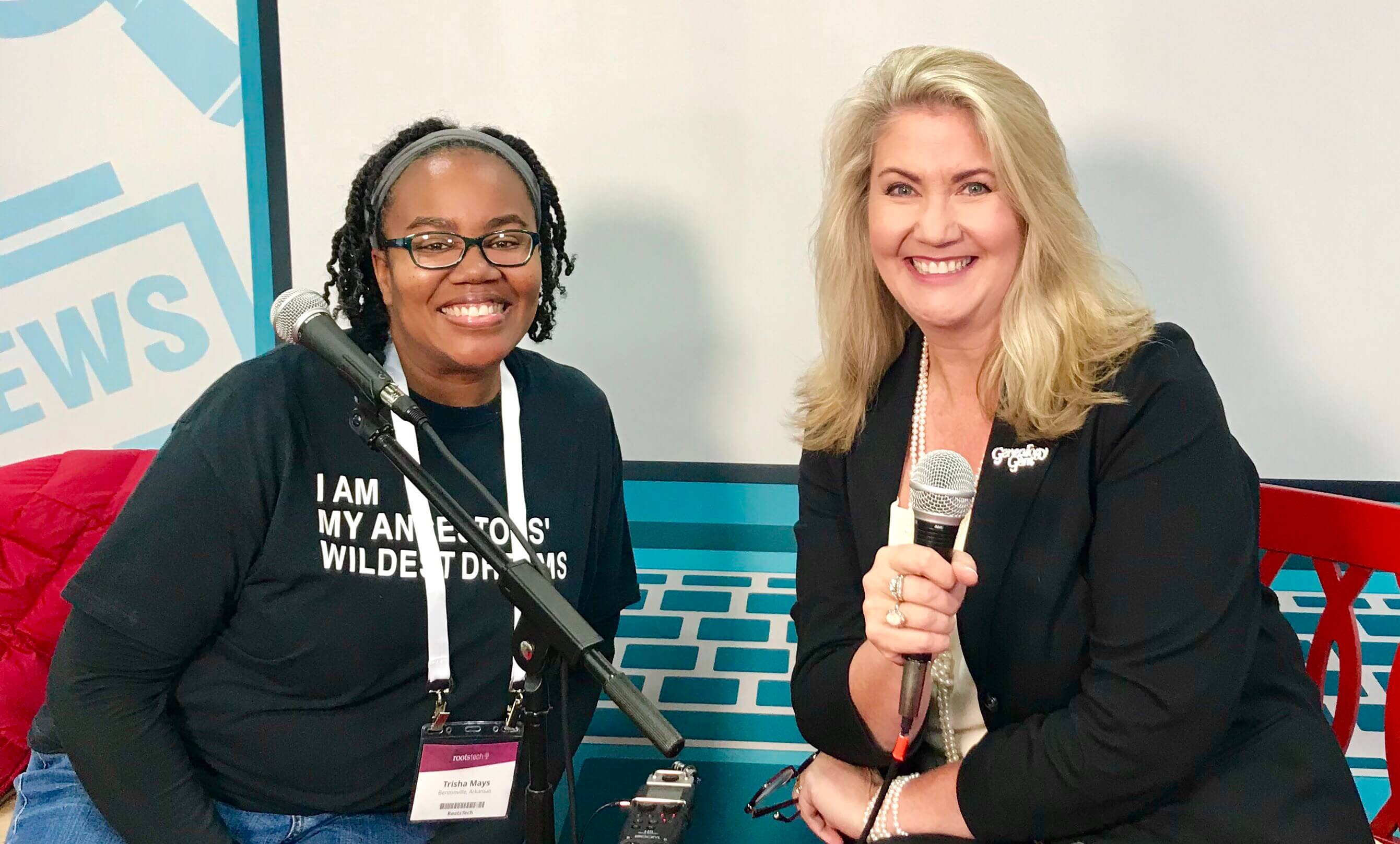
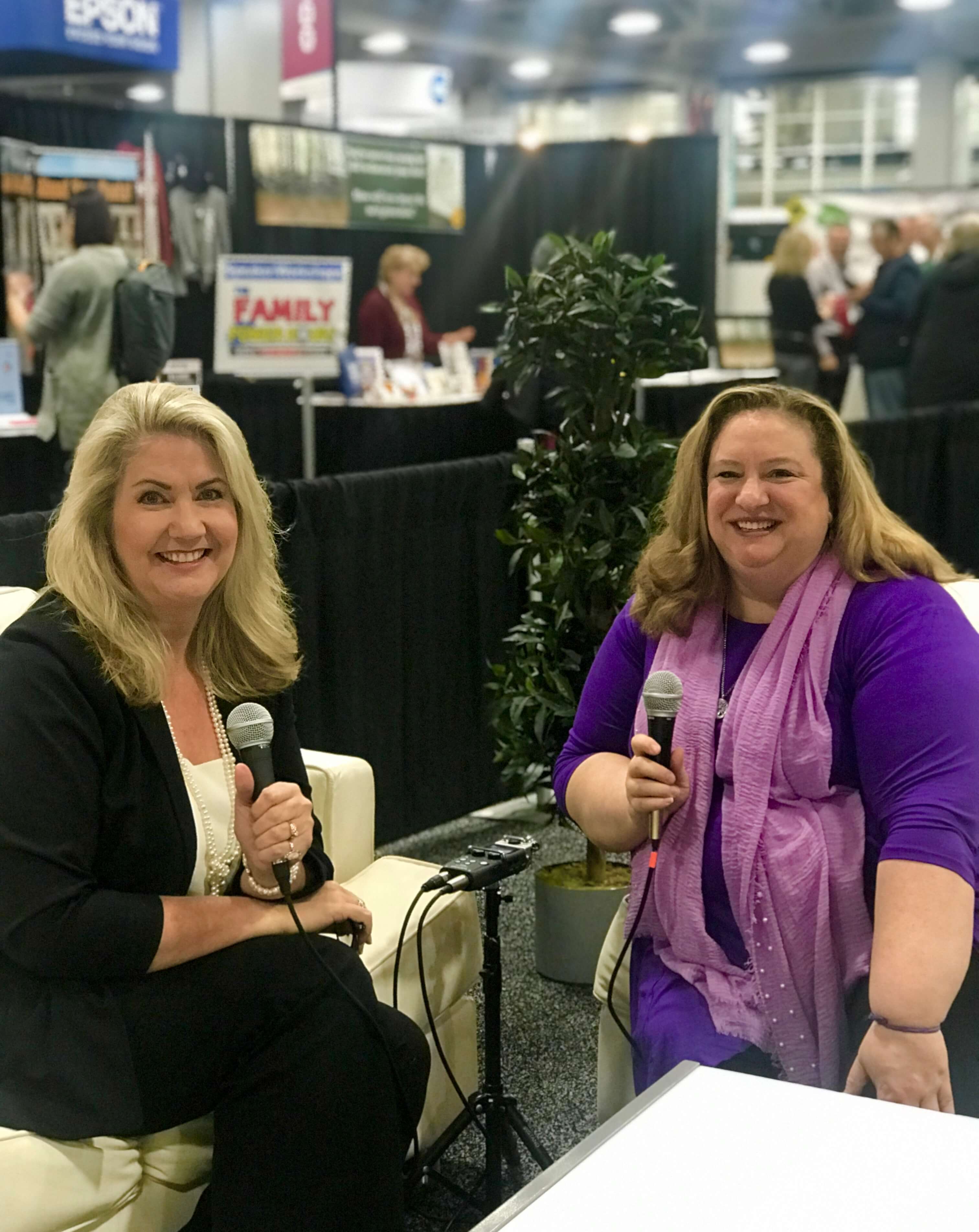

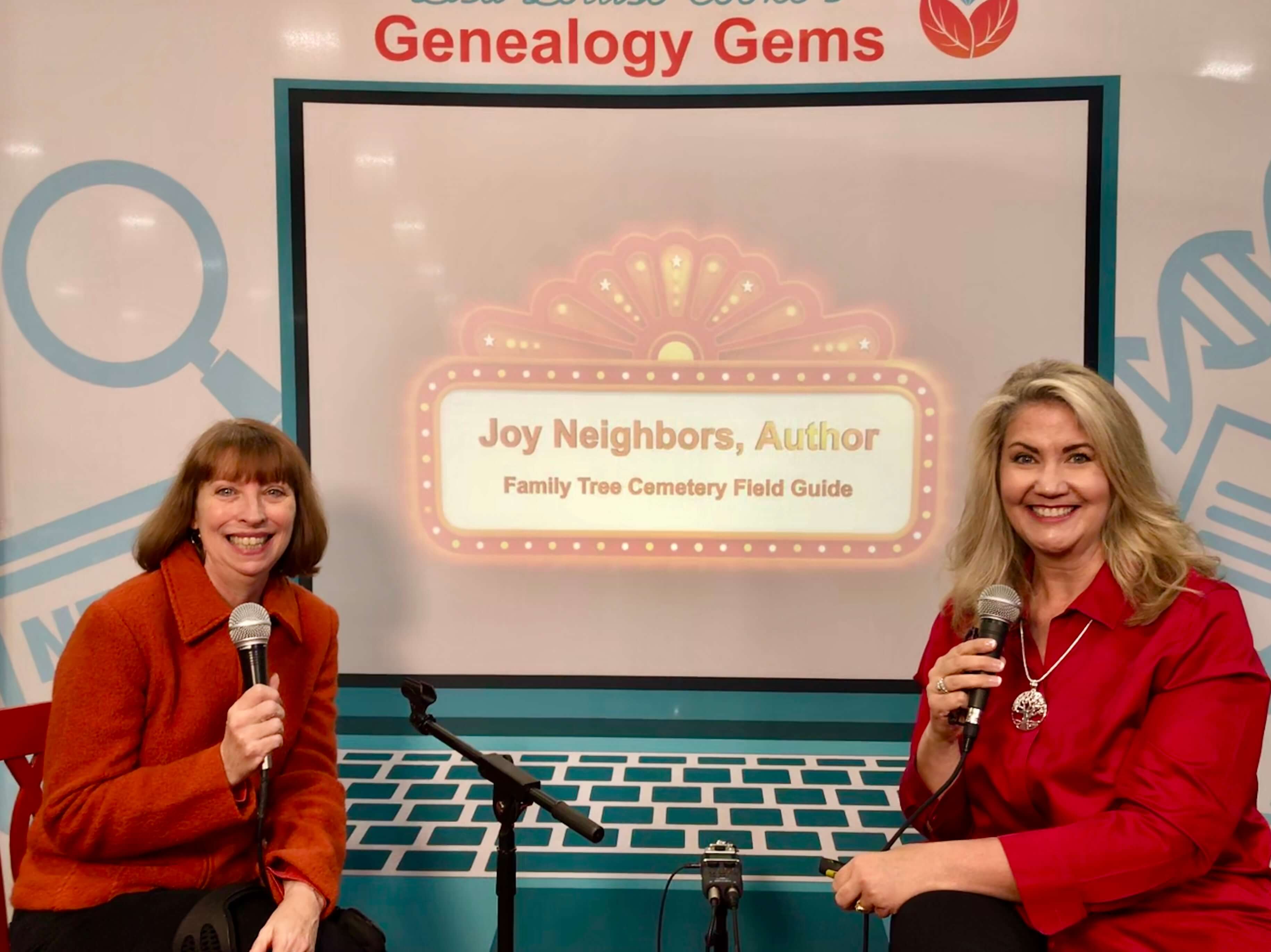




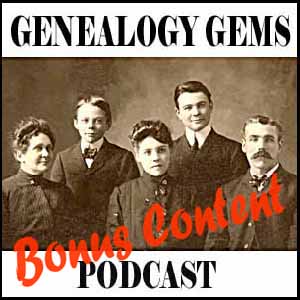
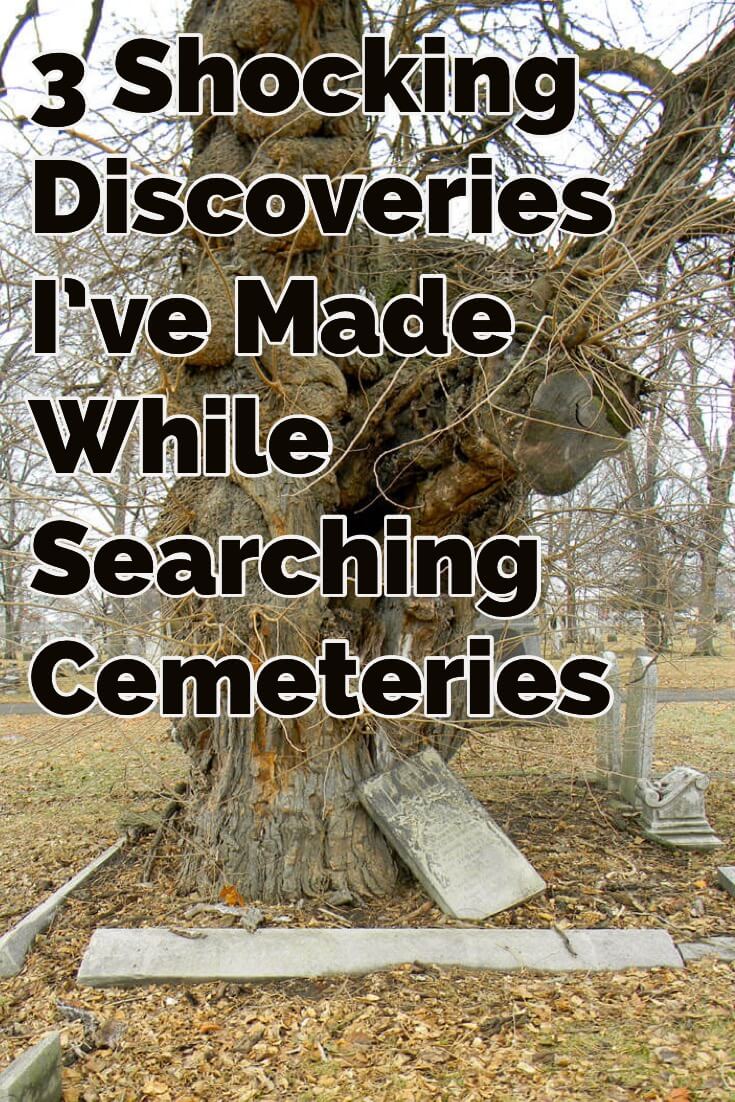
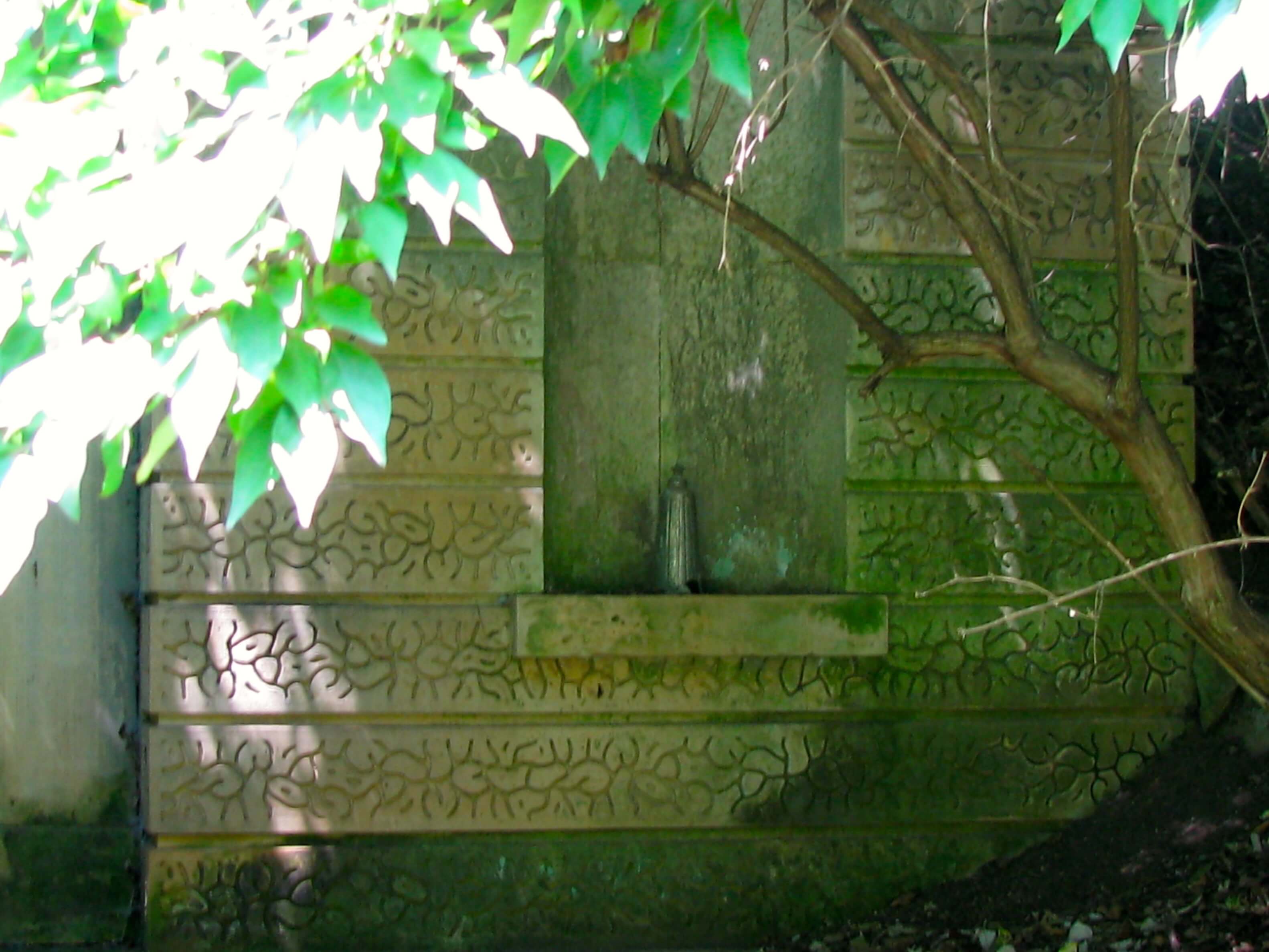
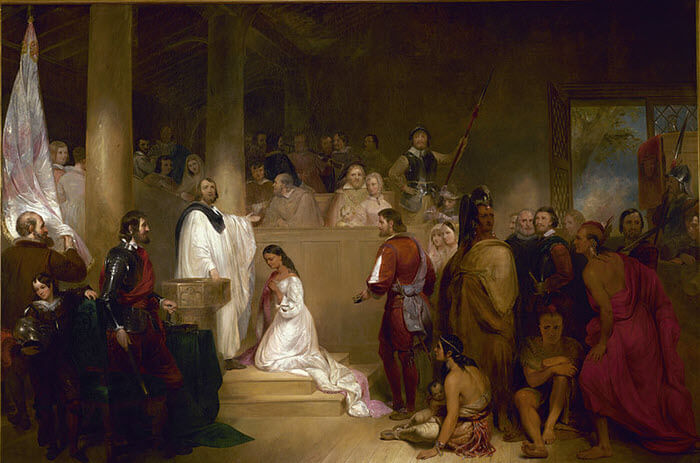
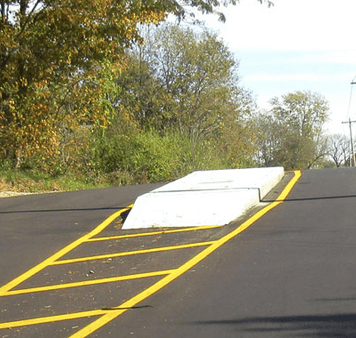
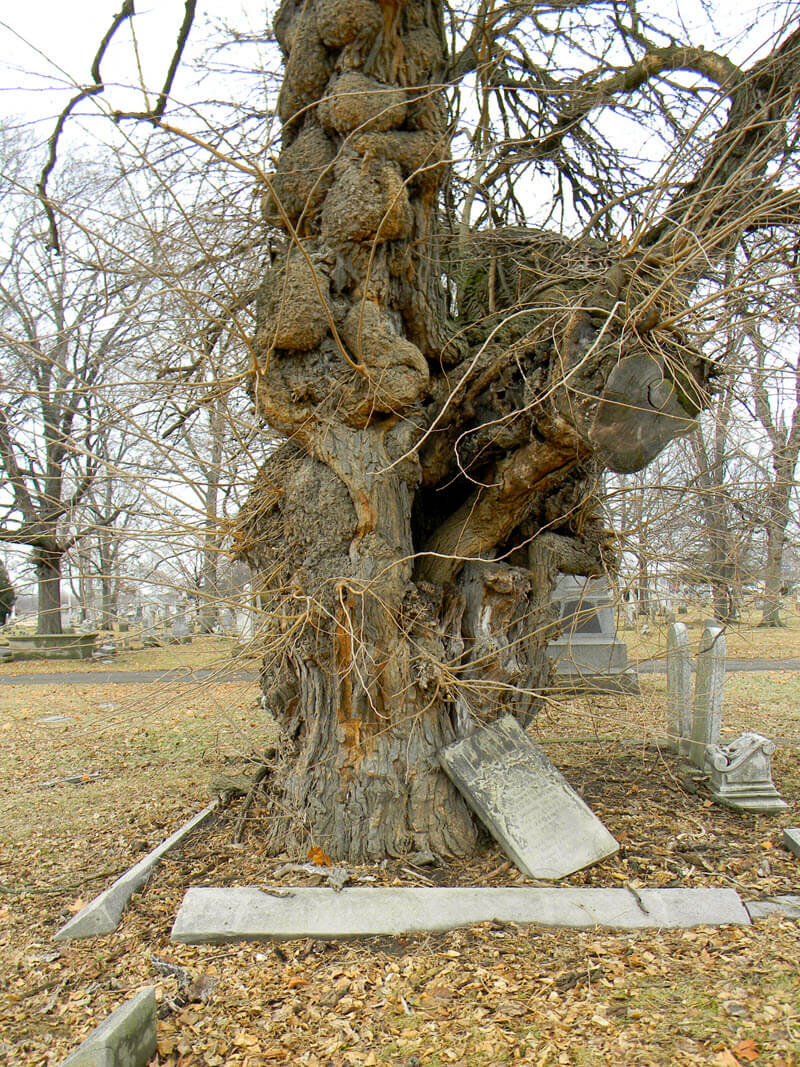 The second shot shows the opening in the middle of the tree: a bizarre heart shape. And the mishmash of tombstones scattered around the plot date to the late 1800s but names are indecipherable.
The second shot shows the opening in the middle of the tree: a bizarre heart shape. And the mishmash of tombstones scattered around the plot date to the late 1800s but names are indecipherable.